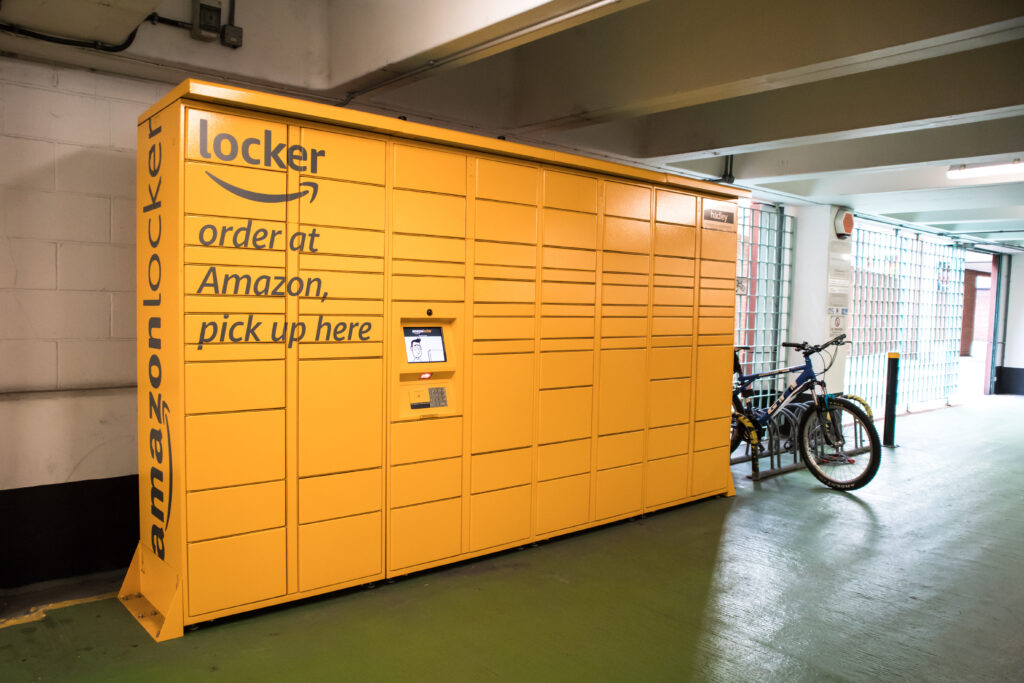Andre Pharand, senior executive and advisor, e-commerce fulfillment, urban logistics and last-mile delivery expertise, Pharand Advisors, highlights some observations and the why behind the company’s view regarding parcel locker adoption and the contrast between Europe and North America.
I attended the Parcel+Post Expo Amsterdam in 2023. I was just amazed at the quantity of parcel locker vendors that had a stand and that were promoting parcel locker delivery as the next best thing to solve last-mile economics. I counted no less than 23 different parcel locker companies. Each stand had an example of their parcel locker hardware but aside from size and color, it was difficult to ascertain the key differentiators. In the back of my mind, I could not figure out why there were so many competing for so little market. Most of the consumer research I have led and seen indicates that recipients want home delivery, even in Europe.
In early June this year at Home Delivery World USA in Philadelphia, I counted three parcel locker vendors only.
Notwithstanding the fact that these events are different in scale, market and time, they do highlight the fact that there are fewer parcel locker vendors targeting North America. What is going on?
Parcel lockers are not new in North America. Almost all large carriers and retailers have tried parcel lockers in the last 10 years. There are three reasons why parcel lockers have struggled and will end up representing only a small percentage of deliveries in the USA.
-
Home delivery economics are strong
In the USA, first-time delivery rates to the home are very high, often above 98%. Early on, delivery companies waived signature upon delivery and just left the parcel, when possible, in a safe location. Many carriers like Intelcom or Amazon provide images of the item delivered. While porch piracy is an issue in some neighborhoods, it is not significant enough to alter the model. Many recipients resort to video doorbells to monitor the front entrance to discourage attempts. In Europe, this is not always the case, especially in city centers and apartments that don’t have doormen or mail rooms.
Secondly, marketplaces, regional carriers and the USPS have developed models that have made B2C low-cost delivery a reality. Amazon, starting with one warehouse, now has thousands of facilities around the US near urban centers to store inventory close to consumers. This reduces the transit time and lowers the cost of last-mile delivery. It is now possible to order same-day delivery on over three million SKUs from Amazon in over 70 different metro areas. A recent analysis of mine calculated that Amazon spends less than US$1.50 per parcel in direct costs on same-day delivery thanks to spectacular route and drop density. Others have leveraged low-cost contractors and gig workers to reduce the cost of labor on the last mile. Lastly, USPS has allowed workshare into the DDU (the last node of their network from which letter carriers leave) at affordable rates (until now) and this makes the last mile much more affordable.
-
Decades of car-driven urban planning play against lockers
Urban design and zoning laws in the USA have led, with some exceptions like New York or Washington, to a very inefficient use of land. This can be defined as the number of habitants per square kilometer. In Europe, Milan has a density of about 7,500 habitants per square kilometer. In Naples, that can peak to up to 37,000 habitants per square kilometer. City plans are not based on grids and some cities impose pedestrian-only zones or restrict vehicle access.
However, in the USA in cities like Houston, Texas or Orange County, California, population density hovers in the 1,300 habitants per square kilometer. To visualize this, imagine your typical single-family home development in the suburbs with windy roads, parks and crescent streets.
A well-located parcel locker in Europe can be within 100m of over 250 people by foot. That same parcel locker in your typical suburb in the USA might reach 40 people. In other words, a carrier would need six times more parcel lockers to reach the same population, making widespread parcel locker implementation impractical.
-
Customers want convenience
In my case, in Boca Raton, Florida, the nearest Whole Foods (PUDO location) or Amazon Locker is 12 minutes away by car, or in other words, a 30-minute trip to get a parcel. Most people I talk to would say, “Well if I have to drive to the nearest parcel locker to get my online purchase, I might as well buy the item in the nearest store.” The issue is that local stores don’t carry as much inventory.
Broadly speaking, as noted, most people who get home delivery will want to continue getting home delivery because that is the value proposition of ordering online. Trying to change pricing to incentivize parcel locker adoption may not be effective as consumers will include the cost of their time and fuel and the impact on the environment of their trip to the locker.
Most parcel locker implementations I have been involved with in North America have not been successful. They were trials that barely achieved 15% utilization; not enough to give project sponsors the confidence to expand the trial.
In summary, I believe parcel lockers will play a role in certain specific use cases in the USA – university campuses, very densely populated areas, in front of large hotels, etc – but I do not believe they will have the same success they have had in Europe.


